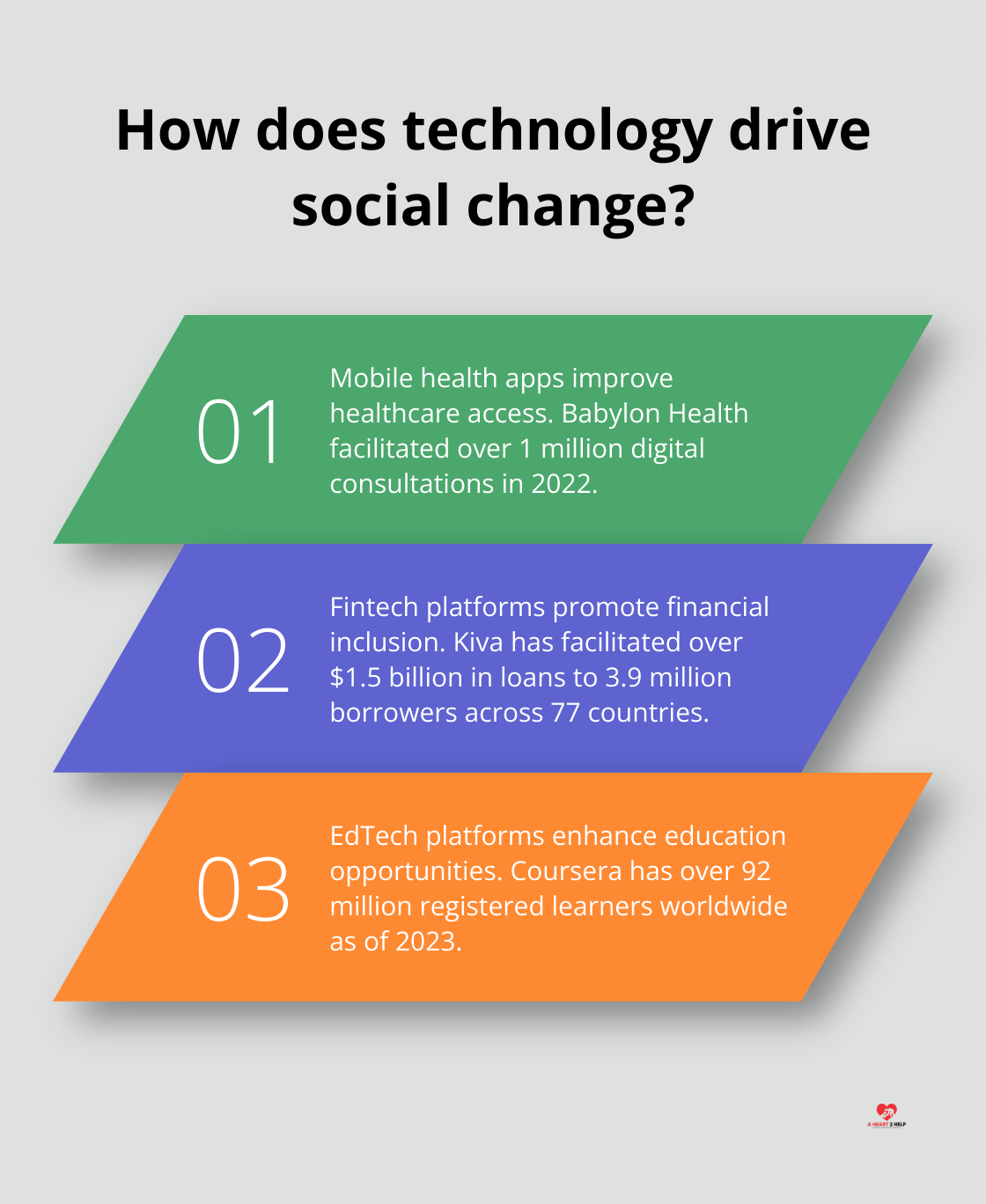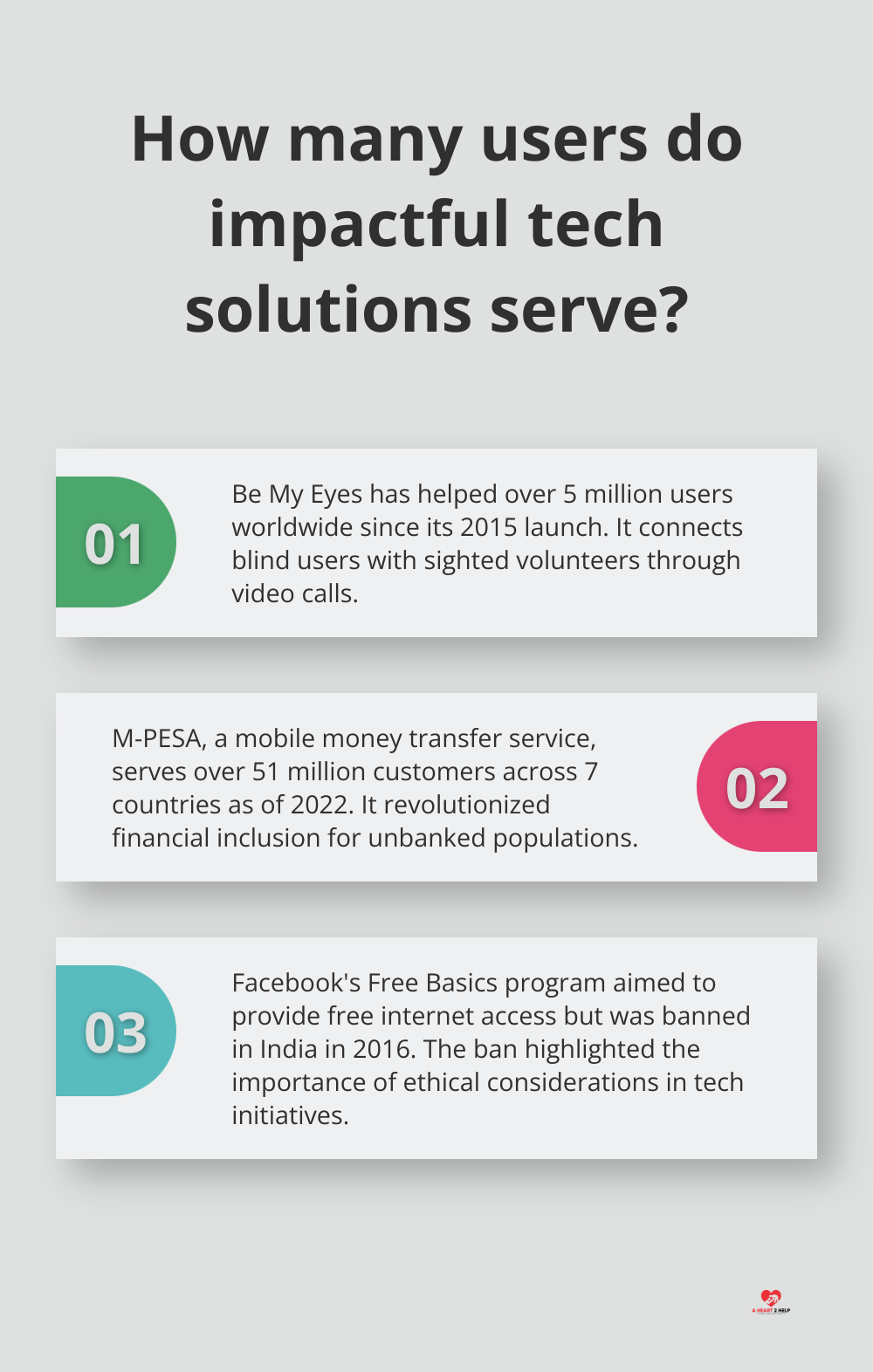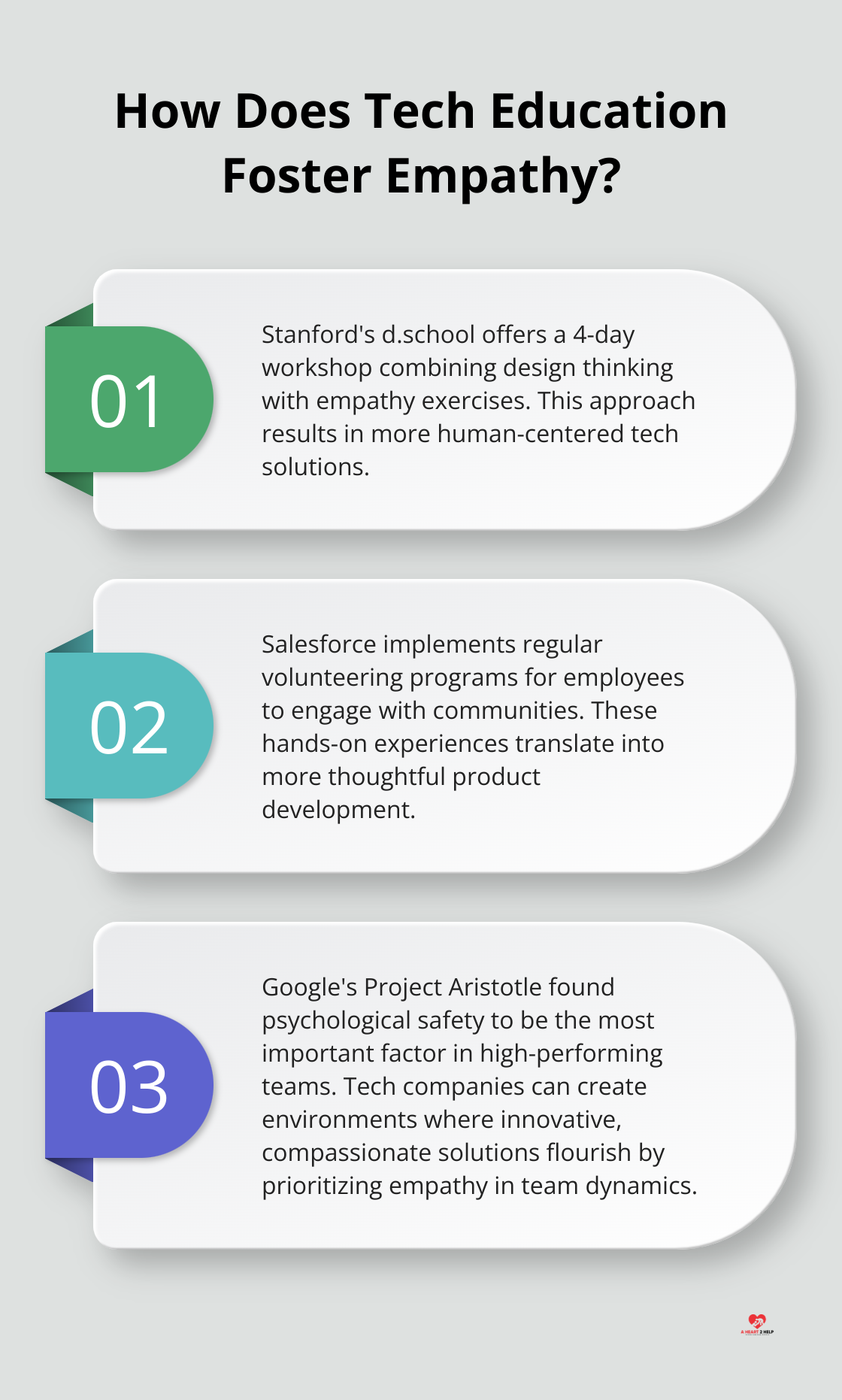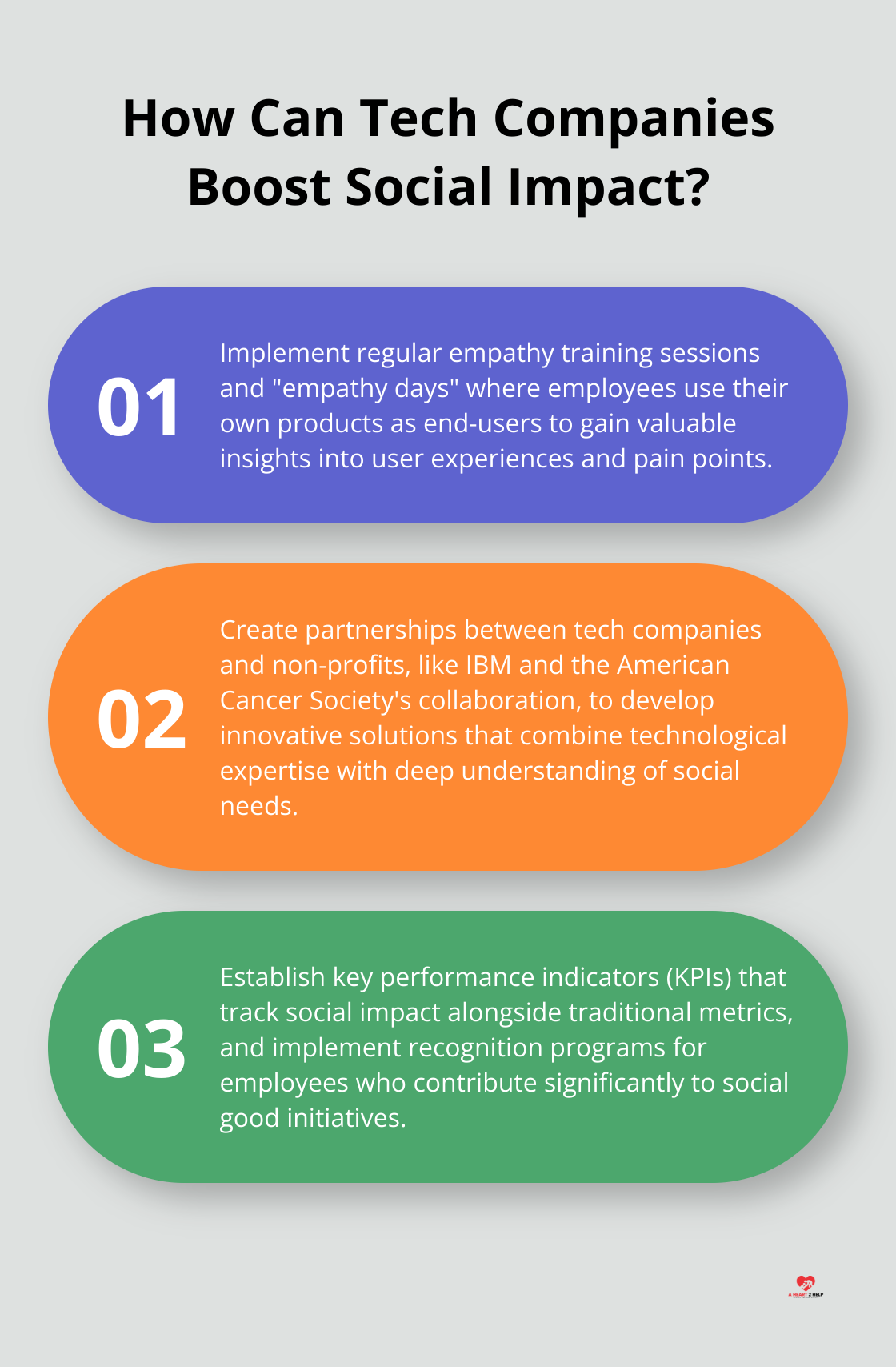Technology has the power to transform lives and create positive change on a global scale. At A Heart 2 Help, we believe in harnessing tech compassion to address pressing social issues and improve communities worldwide.
In this post, we’ll explore how innovative tech solutions, driven by empathy and understanding, can make a real difference. We’ll also discuss practical ways to foster a culture of compassion in the tech industry and beyond.
How Technology Drives Social Change
Technology has become a powerful force for social good, enabling innovative solutions to address complex societal challenges. We’ve witnessed how tech-driven initiatives create meaningful impact and foster positive change in communities worldwide.
Revolutionizing Healthcare Access
Technology transforms healthcare access, particularly in rural and underserved areas. Mobile health applications lead this change. For example, Babylon Health provides AI-powered symptom checking and video consultations with doctors, making healthcare more accessible and affordable. In 2022, Babylon Health facilitated over 1 million digital consultations, significantly reducing the burden on traditional healthcare systems.
Empowering Financial Inclusion
Fintech innovations promote financial inclusion. Micro-lending platforms like Kiva have revolutionized access to capital for entrepreneurs in developing countries. Since its inception, Kiva has facilitated over $1.5 billion in loans to more than 3.9 million borrowers across 77 countries, demonstrating the massive potential of technology to empower individuals economically.
Enhancing Education Opportunities
EdTech platforms break down barriers to education globally. Coursera partners with top universities to offer online courses and degrees. As of 2023, Coursera has over 92 million registered learners worldwide, providing access to quality education that was previously out of reach for many.
Driving Environmental Sustainability
Technology spearheads environmental conservation efforts. Apps like iNaturalist allow citizens to contribute to biodiversity research by recording and sharing their observations of plants and animals. With over 100 million observations recorded, iNaturalist has become a valuable tool for scientists and conservationists worldwide.
The Compassion Factor
While these technological advancements impress, compassion remains the driving force behind their success. The most impactful tech solutions deeply understand and address human needs. This is where platforms like A Heart 2 Help play a vital role, connecting those who want to help with those in need (fostering a culture of community support and kindness).

Combining cutting-edge technology with genuine compassion creates solutions that not only solve problems but also strengthen the fabric of our communities. As innovation continues, it’s essential to keep this human-centered approach at the core of technological advancements.
The next chapter will explore how we can build these compassionate tech solutions, focusing on identifying social issues that benefit from tech interventions and developing user-centered designs for maximum impact.
How to Build Tech Solutions That Care
Identifying Social Issues for Tech Intervention
The creation of impactful tech solutions starts with the recognition of areas where technology can make a significant difference. This process involves:
- Community engagement: Surveys, focus groups, and interviews with community members provide firsthand understanding of their challenges.
- Data analysis: Existing research and statistics help identify trends and gaps in current social services.
- Expert collaboration: Partnerships with social workers, healthcare professionals, and community leaders offer insights into complex social issues.
The app Be My Eyes exemplifies this approach. It identified the challenge visually impaired individuals face in everyday tasks. By connecting blind users with sighted volunteers through video calls, they created a simple yet powerful solution (helping over 5 million users worldwide since its 2015 launch).
Developing User-Centered Designs
After the identification of a social issue, the next step involves the design of a solution that works for the intended users. This includes:
- Prototyping and testing: Early versions of the solution undergo testing with the target audience. Feedback drives iterations.
- Accessibility considerations: The tech solution must accommodate people with various abilities and tech literacy levels.
- Cultural sensitivity: Design must account for cultural nuances and preferences of target communities.
M-PESA, a mobile money transfer service in Kenya, demonstrates the power of user-centered design. It understood the needs of unbanked populations and created a simple SMS-based system. M-PESA revolutionized financial inclusion (serving over 51 million customers across 7 countries as of 2022).
Incorporating Ethical Considerations
The development of tech solutions for social good requires the prioritization of ethics throughout the process:
- Data privacy and security: Robust measures protect user data, especially for vulnerable populations.
- Transparency: Clear communication about the technology’s function, data collection, and usage is essential.
- Inclusivity: The solution must not inadvertently exclude or disadvantage certain groups.
- Long-term impact assessment: Consideration of potential long-term effects on communities and society at large is necessary.
The controversy surrounding Facebook’s Free Basics program in India highlights the importance of ethical considerations. Despite aims to provide free internet access, the program faced criticism for potentially creating a two-tiered internet and violating net neutrality principles. Its ban in India in 2016 underscores the need for thorough ethical evaluation of tech initiatives.

The focus on these key areas – identifying real needs, user-centered design, and ethical considerations – leads to the creation of tech solutions that address social issues and empower communities. This approach aligns with the success of platforms like A Heart 2 Help, which connects those in need with those who can help.
The next chapter will explore how we can foster a culture of tech compassion, encouraging empathy in tech education and the workplace, and creating platforms for knowledge sharing and community engagement.
How Can We Build a Culture of Tech Compassion?
Empathy-Driven Education and Workplace Practices
Tech education must integrate empathy into curricula. Stanford University’s d.school offers a four-day workshop that combines design thinking with empathy exercises to solve real business challenges. This approach results in more human-centered tech solutions. In the workplace, companies like Salesforce implement regular volunteering programs. These programs allow employees to engage directly with communities they serve. This hands-on experience translates into more thoughtful product development.

Google’s Project Aristotle found that psychological safety was the most important factor in high-performing teams. Psychological safety refers to the ability to take risks without feeling insecure or embarrassed. Tech companies can create environments where innovative, compassionate solutions flourish by prioritizing empathy in team dynamics.
Partnerships for Purposeful Innovation
Collaboration between tech companies and non-profits can lead to groundbreaking solutions. IBM and the American Cancer Society partnered to create a cognitive computing platform. This platform helps oncologists make more informed treatment decisions. The collaboration combined IBM’s technological expertise with the American Cancer Society’s deep understanding of patient needs.
Social enterprises show how tech startups can build with social impact at their core. Simprints develops biometric technology for global health and poverty alleviation. Their fingerprint recognition technology has helped healthcare workers in Bangladesh accurately identify and track patients (improving healthcare delivery in remote areas).
Knowledge Sharing and Community Engagement Platforms
Creating spaces for knowledge sharing and community engagement is vital for fostering tech compassion. GitHub’s Social Impact program provides free tools and training to non-profits and social enterprises. This initiative enables them to leverage technology for their causes. The program has supported over 10,000 organizations worldwide.
Platforms like DonorsChoose connect teachers in high-need communities with donors who want to help. DonorsChoose has channeled over $1 billion in donations to classrooms across the United States since 2000 (demonstrating the power of tech-enabled community engagement).
A Heart 2 Help takes this concept further by directly connecting individuals who need help with those who can provide it. This real-time, needs-based approach to community engagement represents the future of tech-driven social impact.
Cultivating Empathy in Tech Teams
Tech companies can implement specific strategies to cultivate empathy within their teams. Regular empathy training sessions can help employees understand diverse perspectives. Cross-functional team projects expose team members to different roles and challenges within the organization. This exposure fosters a more holistic understanding of the product development process.
Companies can also encourage employees to participate in “empathy days,” where they use their own products or services as end-users would. This practice provides valuable insights into user experiences and pain points.
Measuring and Rewarding Compassionate Innovation
To truly embed compassion in tech culture, companies must measure and reward it. Implementing key performance indicators (KPIs) that track social impact alongside traditional metrics can shift focus towards more compassionate innovation. These KPIs might include user satisfaction scores, accessibility ratings, or the number of underserved users reached.
Recognition programs that highlight employees or teams who have made significant contributions to social good can inspire others and reinforce the importance of compassionate tech development.
Final Thoughts
The potential of tech compassion to drive positive social change is immense. From revolutionizing healthcare access to empowering financial inclusion, tech-driven solutions make a significant impact on communities worldwide. The key to this success lies in the fusion of cutting-edge innovation with genuine human empathy.

We call upon individuals, organizations, and tech companies to embrace this ethos of compassionate innovation. Consider volunteering your skills, supporting social enterprises, or integrating social impact goals into your business strategy. Platforms like A Heart 2 Help exemplify how technology can foster community support and kindness.
The future of tech-driven social change is bright. As technology advances, we anticipate even more innovative solutions to complex societal challenges. The most powerful tech solutions will not only solve problems but also strengthen the fabric of our society (leaving no one behind).
